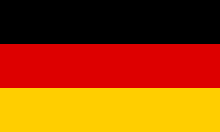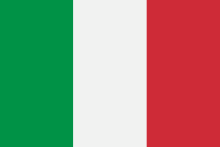Profit vs. Cash Flow: Why Profitable Companies Still Go Bankrupt

Profit vs. Cash Flow: Why Profitable Companies Still Go Bankrupt
It sounds impossible, doesn't it? A profitable company going bankrupt. Yet it happens more often than you'd think — and it's one of the most dangerous misconceptions in business.
You can have positive profits on paper, growing sales, happy customers, and still run out of money. The culprit? Poor cash flow management.
Understanding the difference between profit and cash flow isn't just accounting jargon — it's survival knowledge. Let's break down why this happens and how to protect your business.
What's the Difference Between Profit and Cash Flow?
Profit (also called net income or earnings) is an accounting measure. It shows how much money your business made after subtracting all expenses from revenue — on paper.
Cash flow, on the other hand, tracks the actual movement of money in and out of your business. It's about liquidity — whether you have enough cash available right now to pay bills, employees, and suppliers.
Here's the key insight: You can be profitable without having cash.
Why? Because accounting profit and cash availability operate on different timelines and rules.
Why Profitable Companies Run Out of Cash
1. Timing Gaps Between Sales and Payments
You make a sale today, record the revenue, and show a profit. But if your customer pays you in 60 days, you won't see that cash inflow for two months.
Meanwhile, you still need to pay rent, salaries, and suppliers this week. That's a cash flow gap — and it can sink a growing, profitable business.
2. Rapid Growth Consumes Cash
Growing fast? Congratulations — but growth is expensive. You need to buy more inventory, hire more people, and invest in infrastructure before you collect revenue from new customers.
This is called the working capital trap. The faster you grow, the more cash you need upfront — even if your profit margins are healthy.
3. Non-Cash Expenses on the Income Statement
Not all expenses require immediate cash. Depreciation and amortization, for example, reduce your profit but don't affect your bank account.
Conversely, loan repayments drain cash but don't always show up as expenses on your income statement. This creates a disconnect between reported profitability and actual liquidity.
4. Inventory and Accounts Receivable Tie Up Cash
Money sitting in unsold inventory or unpaid invoices counts as profit, but it's not cash you can use. Until you sell that stock or collect those invoices, your working capital is locked.
A business with $100K in profit but $150K tied up in receivables might struggle to pay a $10K supplier bill.
Real-World Example: A Profitable Company's Cash Crisis
Imagine a growing SaaS startup:
- Revenue: $500K annually
- Expenses: $400K (salaries, software, marketing)
- Net profit: $100K — looks healthy!
But here's what the cash flow statement reveals:
- Customers pay quarterly (every 3 months)
- Salaries and expenses are paid monthly
- Two quiet months = no cash coming in, but bills keep coming
By month two, the company runs out of cash reserves. They can't make payroll. Despite being profitable, they face insolvency.
This is why monitoring cash flow in real time with tools like Trezy's cash flow management platform is critical.
How to Avoid the Profit-Cash Flow Trap
Track Both Metrics Religiously
Don't just look at your income statement. Monitor your cash position daily or weekly. Use a cash flow dashboard to see exactly when money comes in and goes out.
With Trezy, you can view your actual cash balance and forecast future cash needs side by side — so you're never caught off guard.
Build a Cash Flow Forecast
A rolling cash flow forecast projects your cash position 13 weeks out, helping you spot shortages before they become emergencies.
Include expected customer payments, supplier invoices, payroll, and any major expenses. Update it weekly. This simple habit prevents most cash crises.
Manage Payment Terms Strategically
Negotiate faster payment from customers and slower payment to suppliers (within reason). Even small changes — like moving from Net 60 to Net 30 payment terms — can dramatically improve liquidity.
Our supplier management tools help you coordinate payment timing efficiently.
Keep a Cash Reserve
Every business should maintain a cash buffer — ideally 3-6 months of operating expenses. This cushion protects you during slow periods, late payments, or unexpected costs.
Automate Cash Flow Monitoring
Manual tracking in spreadsheets is error-prone and time-consuming. Modern cash flow software like Trezy automatically syncs with your bank accounts, categorizes transactions, and alerts you when cash is running low.
Our performance analytics also show you trends over time, helping you make data-driven decisions about working capital and cash management.
The Bottom Line
Profit is an accounting concept. Cash flow is reality.
You can't pay employees with profit. You can't settle invoices with net income. You need actual cash in the bank.
The businesses that survive and thrive aren't just the profitable ones — they're the ones that master cash flow management. By tracking your liquidity as closely as your profits, building forecasts, and using smart tools like Trezy, you ensure that profitability translates into sustainability.
Don't let a cash crunch destroy a profitable business. Start monitoring your cash position today.








